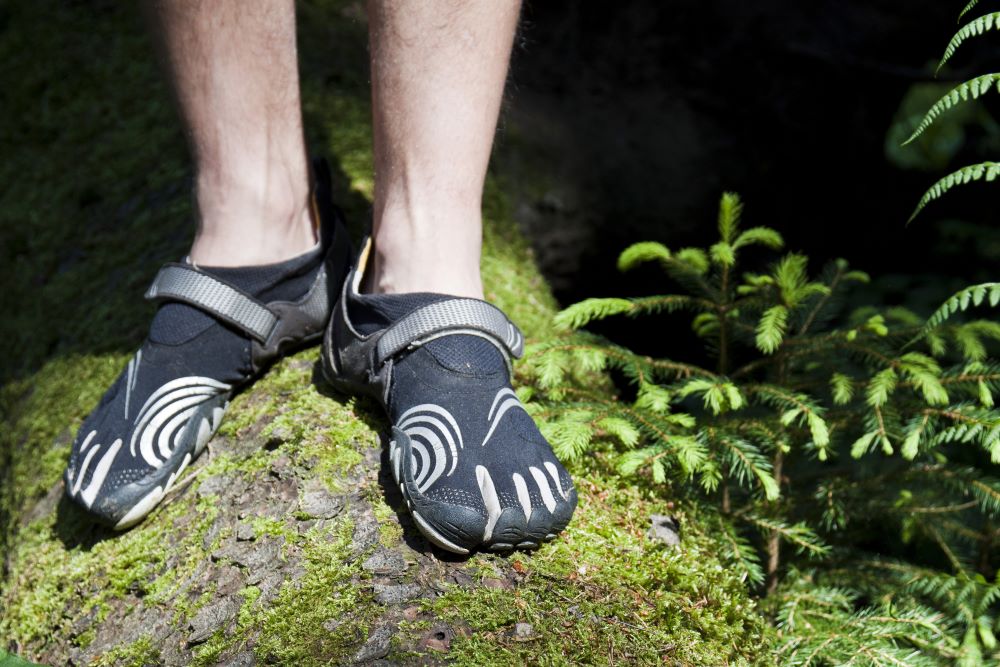Embarking on a journey to complete a half marathon is both an exhilarating and challenging experience. Whether you’re a seasoned runner or a beginner, training for a half marathon requires dedication, strategy, and proper planning. One of the most convenient and effective ways to prepare is by using a treadmill. *Half marathon training on a treadmill* offers a controlled environment where you can focus on building endurance, speed, and strength without the unpredictability of outdoor conditions.
Using a treadmill for your training allows you to simulate the race day experience by adjusting the incline, speed, and distance according to your personalized training plan. This level of control can help you avoid common pitfalls such as weather disruptions, uneven terrain, and safety concerns. Moreover, treadmills often come equipped with features like heart rate monitors and pre-programmed workouts that can be tailored to your half marathon goals.
To get the most out of your treadmill training, it’s crucial to understand the basics of half marathon preparation. This includes setting realistic goals, creating a structured training plan, and incorporating a mix of long runs, speed workouts, and recovery periods. As you progress, you will not only improve your physical fitness but also build the mental resilience needed to tackle those 13.1 miles.
Visit our website to learn more and get started today! Click here.
Benefits of Treadmill Training

Training for a half marathon on a treadmill comes with a plethora of benefits that can significantly enhance your preparation and performance. One of the most prominent advantages is the ability to control your environment. Regardless of the weather conditions outside, you can maintain a consistent training schedule. This means no more missed runs due to rain, snow, or extreme heat.
*Treadmill training* also allows for precise monitoring of your progress. Most modern treadmills are equipped with advanced features like heart rate monitors, calorie counters, and customizable workout programs. These tools enable you to track your performance metrics accurately and make necessary adjustments to your training plan. Additionally, running on a treadmill can reduce the risk of injury by providing a softer surface compared to concrete or asphalt, thus minimizing the impact on your joints.
Another significant benefit is the ability to simulate race conditions. By adjusting the incline and speed, you can mimic the terrain of your upcoming half marathon. This can be particularly useful if you live in a flat area but need to prepare for a hilly race course. Moreover, treadmill training can help improve your mental toughness. Running indoors, often with limited visual stimulation, can build the mental endurance required to push through the tougher segments of your race.
Lastly, treadmill training offers unparalleled convenience. Whether you prefer to run early in the morning or late at night, a treadmill provides the flexibility to train at any time. This flexibility is especially beneficial for those with busy schedules, ensuring that you can stick to your training plan without compromising other commitments.
Crafting a Treadmill Training Plan

Creating an effective treadmill training plan for your half marathon is essential to ensure you meet your goals. The first step is to establish your baseline. Begin by running at a comfortable pace for a set distance or time, and record your stats. This will help you determine your starting point and plan your progression.
Next, incorporate a mix of workouts to target different aspects of your running performance. A well-rounded plan should include:
- Long Runs: These runs build endurance and should gradually increase in distance each week. Aim to complete at least one long run per week, progressively extending the length to mimic race-day conditions.
- Speed Work: Integrate intervals or tempo runs to improve your pace and cardiovascular fitness. For example, you could alternate between high-intensity sprints and recovery periods or sustain a faster pace for a specific duration.
- Hill Workouts: By adjusting the incline on your treadmill, you can simulate uphill running. Hill workouts boost your strength and stamina, preparing you for any elevation changes you might encounter during the race.
- Recovery Runs: These are shorter, easier runs that help your body recover while still maintaining your fitness level. They are crucial for preventing overtraining and reducing the risk of injury.
Additionally, it’s important to incorporate *cross-training* activities such as cycling, swimming, or strength training to enhance your overall fitness and prevent overuse injuries. Plan your weekly schedule to include at least one or two cross-training sessions.
Don’t forget to listen to your body and adjust your plan as needed. Pay attention to signs of fatigue or discomfort and allow for rest days to ensure you remain injury-free. By crafting a comprehensive and varied treadmill training plan, you’ll be well on your way to conquering your half marathon.
Essential Treadmill Workouts
Incorporating essential treadmill workouts into your half marathon training can significantly enhance your performance. These workouts are designed to improve different facets of your running, from speed to endurance and everything in between.
1. Interval Training: This workout involves alternating between high-intensity running and recovery periods. For example, run at a fast pace for 1 minute, followed by 2 minutes of slow jogging or walking. Repeat this cycle for 20-30 minutes. *Interval training* boosts your cardiovascular fitness and helps increase your running speed.
2. Tempo Runs: Tempo runs are sustained efforts at a comfortably hard pace, usually about 80-90% of your maximum effort. Warm up for 10-15 minutes, then run at your tempo pace for 20-30 minutes, and cool down for another 10-15 minutes. These runs improve your lactate threshold, allowing you to run faster for longer periods.
3. Hill Repeats: Simulate hill running by setting your treadmill to a higher incline. Start with a warm-up, then run uphill at a challenging but sustainable pace for 1-2 minutes, followed by a flat-surface recovery for the same duration. Repeat this for 20-30 minutes. Hill repeats strengthen your legs and improve your running efficiency.
4. Fartlek Training: Fartlek, a Swedish term meaning “speed play,” involves random bursts of speed throughout your run. For instance, after a warm-up, sprint for 30 seconds, then jog for 1-2 minutes, repeating this at varying intervals. This workout adds an element of fun and spontaneity while enhancing both speed and endurance.
5. Long Runs: Long runs are crucial for building the endurance needed for a half marathon. Aim to run at a steady, moderate pace for an extended period, gradually increasing the duration each week. These runs help condition your body to handle the physical demands of race day.
Incorporating these essential treadmill workouts into your training plan will provide a well-rounded approach to your half marathon preparation. Mix and match these workouts to keep your training interesting and effective.
Preventing Injuries on the Treadmill

Preventing injuries during your half marathon training on a treadmill is crucial for maintaining consistency and reaching your fitness goals. Treadmill running may seem safer than outdoor running, but it comes with its own set of risks. Here are some tips to keep you injury-free:
1. Warm-Up Properly: Always start your treadmill session with a proper warm-up. Spend at least 5-10 minutes walking or jogging at a slow pace to get your muscles ready for more intense exercise. A good warm-up increases blood flow and flexibility, reducing the risk of strains and sprains.
2. Wear the Right Shoes: Invest in a pair of high-quality running shoes that offer good support and cushioning. The repetitive motion of treadmill running can lead to overuse injuries if your footwear is inadequate. Replace your shoes every 300-500 miles to maintain optimal support.
3. Maintain Good Form: Pay attention to your running form. Keep your head up, shoulders relaxed, and arms at a 90-degree angle. Avoid overstriding, which can lead to joint pain and injuries. Instead, aim for a mid-foot strike and keep your steps quick and light.
4. Use the Incline Feature: Running on a flat treadmill for extended periods can put excessive stress on your lower legs and Achilles tendon. Use a slight incline (around 1-2%) to mimic outdoor conditions and reduce this strain.
5. Listen to Your Body: One of the most important aspects of injury prevention is listening to your body. If you experience pain or discomfort, take a break and assess the situation. Ignoring early signs of injury can lead to more severe issues that may sideline you for weeks or even months.
6. Cross-Train: Incorporate other forms of exercise into your routine, such as swimming, cycling, or strength training. Cross-training strengthens different muscle groups and gives your running muscles a break, reducing the likelihood of overuse injuries.
7. Cool Down: Just as warming up is essential, so is cooling down. Spend 5-10 minutes walking or jogging slowly at the end of your workout. This helps to gradually lower your heart rate and prevents muscle stiffness.
By following these tips, you can significantly reduce the risk of injuries and ensure a smoother, more enjoyable half marathon training experience on the treadmill.
Motivation and Mental Strategies

Maintaining motivation and employing effective mental strategies are key components of successful half marathon training on a treadmill. The monotony of treadmill running can often lead to a lack of enthusiasm, but there are several ways to keep your spirits high and your mind focused.
1. Set Clear Goals: Having specific, measurable goals can give your training purpose. Whether it’s a target pace, distance, or time, clear goals help keep you motivated. Break down your ultimate goal into smaller milestones to celebrate along the way.
2. Mix Up Your Workouts: Variety is the spice of life, and this holds true for treadmill training. Alternate between different types of runs, such as intervals, hill workouts, and long steady runs. This not only keeps things interesting but also improves different aspects of your fitness.
3. Listen to Music or Podcasts: Create an energizing playlist or listen to engaging podcasts to distract yourself from the treadmill’s repetitive nature. Upbeat music can elevate your mood and pace, while podcasts can make the time fly by.
4. Visualize Your Success: Mental imagery is a powerful tool. Picture yourself crossing the finish line, achieving your personal best, or running effortlessly. Positive visualization can enhance performance and keep you motivated during tough workouts.
5. Track Your Progress: Use a fitness app or journal to log your workouts. Tracking your progress provides a sense of accomplishment and helps you stay accountable. Seeing improvements over time can be incredibly motivating.
6. Join a Virtual Running Community: Engage with fellow runners through online forums, social media groups, or virtual races. Sharing your journey with others can provide support, encouragement, and a sense of camaraderie.
7. Reward Yourself: Give yourself something to look forward to after completing your training sessions. Whether it’s a favorite snack, a relaxing bath, or a new piece of running gear, rewards can boost your motivation.
By incorporating these strategies, you can maintain high motivation levels and develop a positive mental attitude towards your treadmill training. Remember, every step you take on the treadmill is a leap towards your half marathon goal.
Visit our website to learn more and get started today! Click here.


